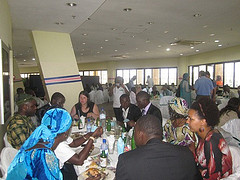The Government of Ghana has introduced variety of measures to improve agricultural productivity in Ghana. Notable amongst these is the redefining of the outdated Food & Agricultural Development Policy (FASDEP I) in FASDEP II to address the loopholes and inefficiencies in the former.
In each subsequent update of this blog, we will look at each policy document and delve on some of the issues and strategies for achieving them.
THE GOALS OF FASDEP II
The new food and agriculture policy, FASDEP II, has six main goals:
- A secure food supply, especially in the face of an emergency.
- Increased income with reduced variability
- Greater competitiveness and better integration into local, regional, and international markets.
- Sustainable management of land and environment
- Application of science and technology to food and agriculture
- Better coordination within and between government agencies, and between Government and development partners and the private sector.
Food Security and Emergency Preparedness
Achieving food security is a national priority. The Ministry of Food and Agriculture defines food as having good quality nutritious food, hygienically packaged and attractively presented, in sufficient quantities all year, and located at convenient places at affordable prices.
Emergency preparedness is the country’s ability to respond quickly and effectively to the needs of victims of natural hazards and other calamities. In the case of food and agriculture, it is the ability to provide food to affected persons in times of disaster
Issues
- Productivity of stable crops low
- Seasonal variations in food supply and prices, due to climate change and other natural events, makes it difficult for Ghana to meet its food demands year-round, especially in the three northen regions
- Farmers who are most vulnerable to food and nutrition insecurity have limited resources to respond to agricultural programmes
- Poor road infrastructure in rural areas makes food distribution more difficult and lowers producers’ prices
- Systems for disaster prevention, preparedness, and response are weak (due to gaps in laws and policies)
- Malnutrition is a serious problem among children, adolescents, and women, especially in rural areas and urban slums.
Strategies
The broad strategy to achieve food security is to focus on at most five staple crops: maize, rice, yams, cassava, and cowpeas. Government support to districts will focus on one or two crops. The choice of a crop will be based on its comparative advantage within a district, its importance to people in the agroecological zone, and whether there is a market for it. The chosen crop(s) will then receive support in terms of irrigation, improved planting materials, and mechanization to enhance productivity along the whole value chain. Each year, strategy will be set for productivity and growth of these crops. This strategy will target the poor to enhance their ability to cope with emergencies and food insecurity.





